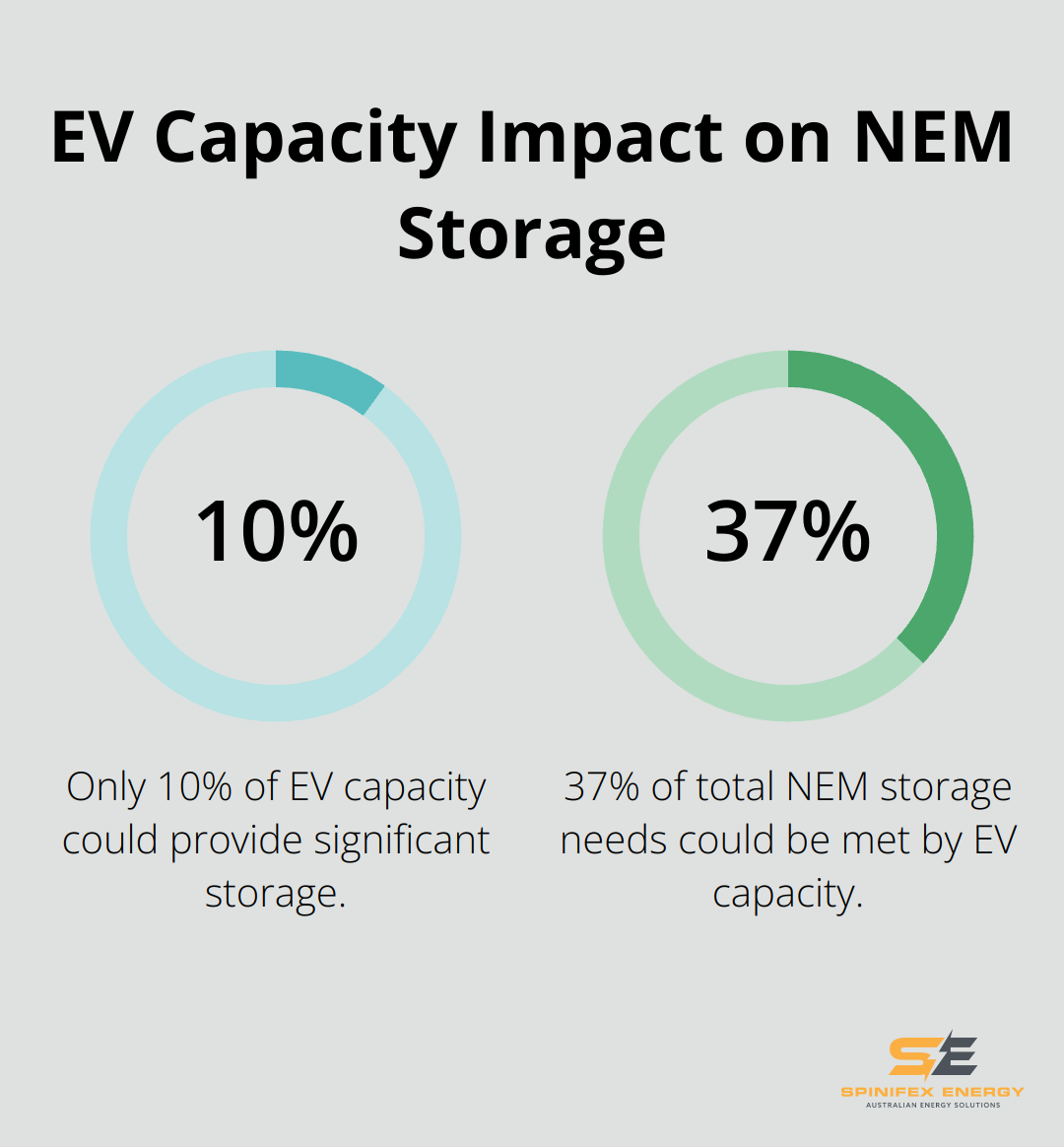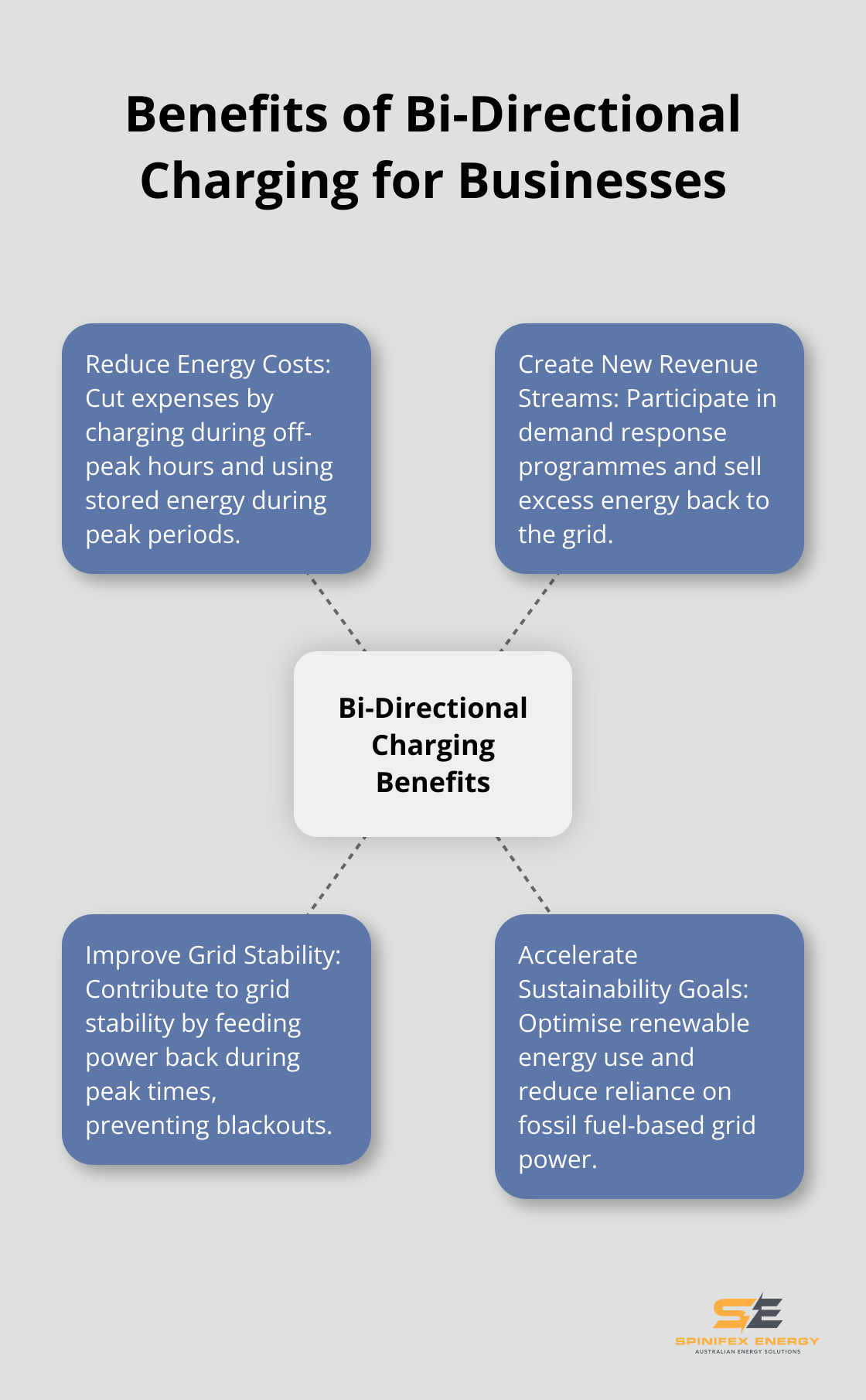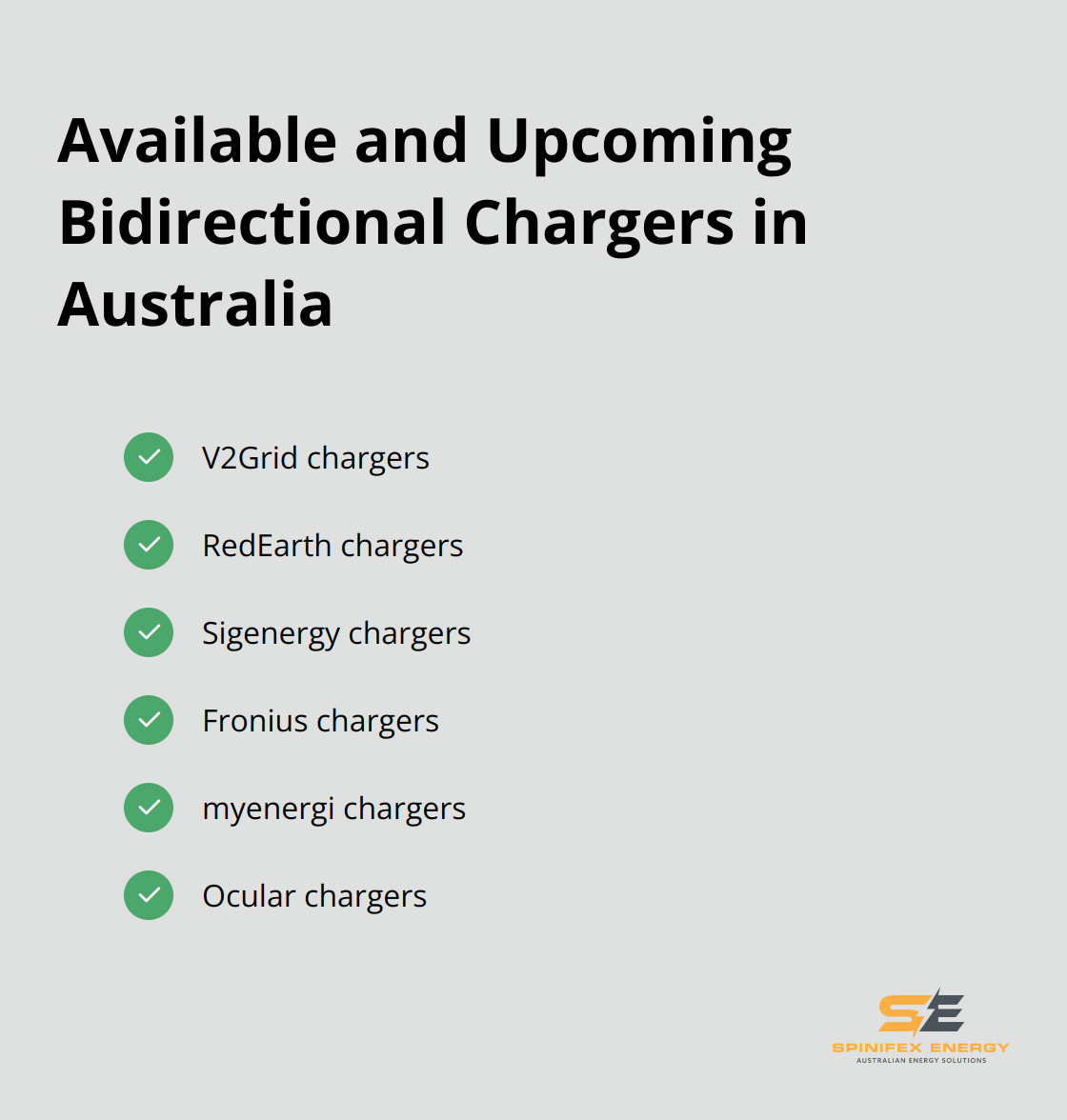At Spinifex Energy, we’re excited about the game-changing potential of bi-directional charging technology.
This innovative approach to energy management is reshaping how businesses interact with the power grid. By allowing vehicles to both receive and send electricity back to the grid, bi-directional charging opens up new possibilities for cost savings and sustainability.
In this post, we’ll explore how this technology works and why it’s becoming a critical component of forward-thinking energy strategies.
What Is Bi-Directional Charging?
The Fundamentals of Two-Way Power Flow
Bidirectional charging refers to the capability of an electric vehicle charging system to facilitate the flow of energy in two directions. This innovative technology enables electricity to flow both to and from an EV’s battery, revolutionising energy management strategies.
Traditional EV charging sends power one way: from the grid to the vehicle. Bi-directional charging creates a two-way street for electricity. Your EV can charge from the grid during off-peak hours (when electricity is cheaper) and feed that power back to your home or the grid during peak demand periods.
Key Components of a Bi-Directional System
A bi-directional charging system consists of three main elements:
- A compatible EV
- A bi-directional charger (the gateway controlling electricity flow)
- A smart energy management system (optimises charging/discharging based on electricity prices, grid demand, and personal energy needs)
Real-World Applications and Economic Impact
Bi-directional charging proves its worth in real-world scenarios. During a recent blackout in South Australia, EVs with bi-directional technology powered homes for up to two days, showcasing their potential as emergency backup power sources.
The financial benefits are substantial. A new roadmap looks to make EVs and bidirectional charging a reality for Australia, with the potential to lower electricity costs.
Integration with Renewable Energy
Bi-directional charging plays a pivotal role in renewable energy integration. For example, excess solar energy generated during the day can be stored in your EV’s battery and used to power your home in the evening. This approach maximises clean energy use and reduces strain on the grid during peak demand times.
The Future of Energy Management
As we explore bi-directional charging’s potential, it’s clear this technology represents more than a new way to charge your car. It signifies a fundamental shift in our approach to energy storage, grid stability, and the role of EVs in our energy ecosystem.
The next chapter will examine how businesses can leverage bi-directional charging to reduce costs, increase sustainability, and create new revenue streams. We’ll explore the tangible benefits this technology offers to forward-thinking organisations.
How Businesses Can Profit from Bi-Directional Charging
Bi-directional charging transforms how companies approach power management and sustainability. This technology offers multiple advantages for businesses seeking to optimise their energy strategy.
Reduce Energy Costs Through Smart Load Management
Bi-directional charging allows businesses to cut energy expenses significantly. Companies can charge their electric vehicle (EV) fleets during off-peak hours when electricity rates are lower and use that stored energy during peak periods. Flexible bidirectional charging from only 10% of EV capacity could provide 37% of total NEM storage needs, offsetting around $94 billion of storage investment.

A logistics company with a fleet of 50 EVs could save significantly on energy costs by adopting this technology. This approach not only cuts expenses but also helps flatten the demand curve, which benefits the entire grid.
Create New Revenue Streams
Bi-directional charging opens up additional income opportunities for businesses. Companies can participate in demand response programmes and sell excess energy stored in their EV batteries back to the grid during peak demand periods. This concept, known as Vehicle-to-Grid (V2G), effectively turns a company’s EV fleet into a virtual power plant.
A recent pilot programme demonstrated the financial potential of this technology. While the Australian market continues to develop, similar opportunities emerge, with energy providers offering wholesale electricity pass-through plans that reward users for exporting power back to the grid.
Improve Grid Stability and Business Resilience
Bi-directional charging contributes to grid stability, which becomes increasingly important as we transition to renewable energy sources. Companies that feed power back to the grid during peak times help prevent blackouts and reduce the need for expensive grid upgrades.
This technology also enhances business resilience. During power outages, companies can use their EV fleets as backup power sources, ensuring critical operations continue. This capability proves particularly valuable for businesses in areas prone to natural disasters or grid instability.
Accelerate Sustainability Goals
Bi-directional charging serves as a powerful tool for businesses committed to reducing their carbon footprint. Companies can significantly decrease their emissions by optimising the use of renewable energy and reducing reliance on fossil fuel-based grid power during peak hours.
The implementation of bi-directional charging also demonstrates a company’s commitment to innovation and sustainability. This commitment can enhance brand image and potentially attract environmentally conscious customers and investors.

While bi-directional charging offers numerous benefits, its successful implementation requires careful planning and expertise. The next section will explore how businesses can effectively integrate this technology into their operations to maximise its potential benefits.
How to Implement Bi-Directional Charging
Assess Your Current Infrastructure
Start with an evaluation of your existing energy setup. Examine your electrical system’s capacity, identify potential upgrade needs, and assess your current energy consumption patterns. A thorough energy audit will reveal opportunities for optimisation and help determine the scale of your bi-directional charging implementation.
Select Appropriate Equipment
The available and upcoming bidirectional chargers in Australia include chargers from V2Grid, RedEarth, Sigenergy, Fronius, myenergi, and Ocular. While the initial investment may seem high, the long-term savings often justify the cost. Look for chargers that comply with the updated Australian electrical standards AS/NZS 4777.1:2024 (which now permit bi-directional charging).

Integrate with Energy Management Systems
Seamless integration with your existing energy management system will maximise the benefits of bi-directional charging. This integration allows for intelligent charging and discharging based on real-time energy prices, demand, and your specific energy needs.
A smart energy management system can automatically decide when to charge your EVs, when to use their stored energy, and when to sell excess power back to the grid. This level of automation leads to significant cost savings and operational efficiencies.
Update Operational Procedures
The implementation of bi-directional charging requires updates to your operational procedures. This includes new protocols for vehicle charging and discharging, maintenance schedules for charging equipment, and guidelines for participation in energy markets.
Businesses often underestimate the importance of this step. Clear, well-documented procedures ensure that all staff members understand how to leverage the new technology effectively.
Train Your Team
Comprehensive training is essential for the successful implementation of bi-directional charging. This includes education for your fleet managers, facilities team, and even drivers on the new technology and procedures.
Hands-on training sessions coupled with clear documentation yield the best results. The designation of ‘energy champions’ within your organisation can spearhead the adoption and serve as go-to resources for their colleagues.
The implementation of bi-directional charging represents a significant step towards a more sustainable and cost-effective energy strategy. The process may seem complex, but the long-term benefits (in terms of energy savings, increased resilience, and sustainability) make it a worthwhile investment for forward-thinking businesses.
Final Thoughts
Bi-directional charging transforms energy management for businesses. This technology reduces energy costs, creates new revenue streams, improves grid stability, and accelerates sustainability goals. Electric vehicles now function as dynamic power sources, drawing from and feeding power back to the grid, which creates a flexible energy ecosystem.
The future of bi-directional charging looks bright. As more EV models become compatible and charging infrastructure expands, we expect widespread adoption across industries. This innovative approach will revolutionise energy strategies, especially when integrated with renewable energy sources and smart grid technologies.
At Spinifex Energy, we help businesses implement cutting-edge solutions like bi-directional charging. Our expertise in energy procurement, commercial solar power systems, and battery storage solutions can help you reduce electricity costs. Contact us to learn how bi-directional charging can position your business at the forefront of the energy revolution.

